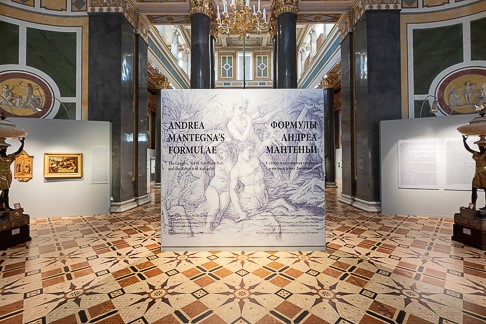
On 17 November 2023, the exhibition Andrea Mantegna’s Formulae. The Graphic Art of Northern Italy and the Rebirth of Antiquity was opened at the State Hermitage Museum.
The display presents more than 250 works – prints and drawings, sculpture and applied art (glyptics, ceramics, pieces of armour), from the collections of the State Hermitage Museum, Pushkin State Museum of Fine Art (Moscow), State Library of Russia (Moscow) and National Library of Russia (St Petersburg). The focus is on seven engravings made in person by Andrea Mantegna, one of the most significant masters of the Early Renaissance. Those are The Entombment, Christ between Saints Andrew and Longinus, both halves of The Battle of the Sea Gods, a Virgin and Child and a pair of prints Bacchanal with Silenus and Bacchanal with a Wine Vat.
The chief task of the exhibition has been to track the course of the artist’s thinking, to show ancient and mediaeval prototypes for his images, and also to show how the visual formulae for human emotions that Mantegna found spread and changed in the works of his pupils and imitators.
Andrea Mantegna, like all Renaissance artists, sought to regenerate Classical Antiquity, to revive and continue great ancient art. To that end, he developed a distinctive method: finding in the works of classical artists the most expressive poses and compositions – formulae of a sort expressing the height of emotions – and then reusing them. It is to the life of these forms and formulae in the graphic works of Mantegna and the output of his followers that the exhibition is devoted.
The display is arranged in an unusual way – constructed around each of Mantegna’s engravings are visual chains of successive influences, obvious and putative connections: from classical prototypes that inspired the master to the creations of artists who imitated him. Each of the lines evolves over time, giving various interpretations and variants in the development of one and the same formula in the work of artists across different eras.
Source: The State Hermitage Museum
